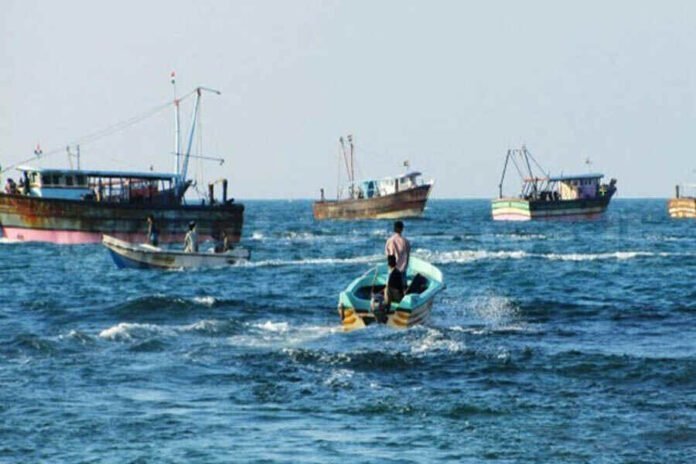Sri Lanka’s navy has once again detained 10 Indian fishermen, just two days after capturing 12 Indian fishermen. All their boats were seized, and these incidents have fueled a long-standing dispute between India and Sri Lanka.
Indian fishermen often venture near the maritime boundary with Sri Lanka to catch fish, creating a significant tension between the two countries. At times, the situation escalates to the point where Sri Lanka resorts to firing upon Indian fishermen, claiming that they illegally enter Sri Lankan waters. Sri Lanka has been known to seize their boats and, in some instances, destroy them. The central question remains: Why do Indian fishermen risk their lives by entering Sri Lanka’s maritime territory?
Let’s delve into the history first.
India and Sri Lanka have had friendly relations, both having endured British colonial rule for an extended period. From India’s independence on February 4, 1948, until 1974, fishermen from both countries independently fished in the Palk Straits and Mannar Gulf. These areas are divided by the Rama Setu. These regions are where Indian fishermen traditionally found abundant fish. Later, in 1976, due to the escalating conflicts, both nations drew the International Maritime Boundary Line (IMBL) to resolve the issue. An agreement was reached that fishermen from either country would not trespass into each other’s territories.
The loss of Katchatheevu Island:
Four agreements related to the maritime boundary were signed between India and Sri Lanka. In the 1976 agreement, India suffered a significant setback when Katchatheevu Island, part of the Madras Presidency during British rule, was ceded to Sri Lanka. Despite this, Indian fishermen continued to use the island. Even today, Indian fishermen go to this island to dry their nets and find shelter. However, since it falls within Sri Lanka’s boundaries, their navy often arrests Indian fishermen, causing them financial losses due to seized boats and disrupted fishing activities. In 2014, the Indian government announced its intention to reclaim Katchatheevu Island, but the process hasn’t materialized.
Why Indian Fishermen Take the Risk:
Fishing for prawns is a traditional occupation for Indian fishermen, providing their livelihood. While there are plenty of fish in Indian waters, Indian fishermen seek shrimp, which is particularly delicious and commands a high demand. The demand for prawns results in better prices, making it financially rewarding for the fishermen. However, the challenge lies in the fact that the Indian waters do not have an adequate supply of prawns, leading fishermen to venture into Sri Lankan waters, particularly the Gulf of Mannar, where they can find a plentiful catch. Despite being aware of the risks, Indian fishermen cross the IMBL to reach Katchatheevu Island and beyond, contributing to the ongoing conflicts with the Sri Lankan navy.
Efforts to Evade Sri Lanka’s Navy:
The IMBL is not far from the Indian coastline—approximately 12 nautical miles from Rameswaram and only 9 nautical miles from Dhanushkodi. Every week, around 800 trailers (mechanized boats) embark on a perilous journey. For each fisherman, the trip is challenging as they need to enter Sri Lankan waters to find a substantial quantity of prawns. The Gulf of Mannar, specifically in the waters near the Palk Strait, offers favorable prices for the sale of prawns. Indian fishermen often anchor their boats near the Indian border, entering Sri Lankan waters one by one. If a Sri Lankan navy vessel is spotted, the rest of the Indian boats retreat, waiting for the navy to depart before resuming their fishing activities. However, not all fishermen are fortunate, and some end up in the custody of the Sri Lankan navy.
In conclusion, while the historical agreements and efforts to resolve the maritime boundary issues between India and Sri Lanka exist, the challenges faced by Indian fishermen persist. The demand for specific seafood, coupled with limited resources in Indian waters, drives these fishermen to navigate treacherous waters, risking not only their livelihoods but also their lives in the ongoing disputes with the Sri Lankan navy.



